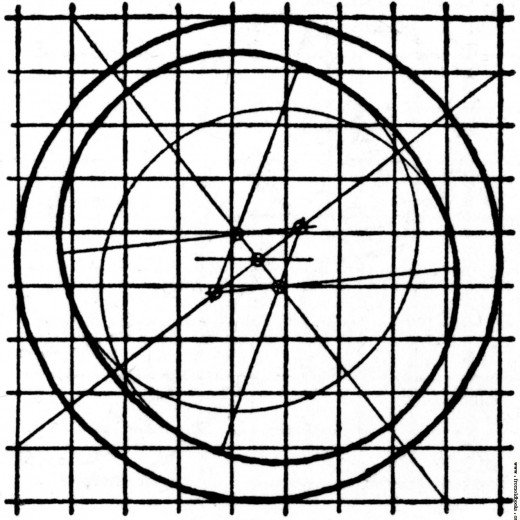Artist Entrepreneur: Z for Zen—The Artist’s Alphabet Guide to Writing About Your Art by Aletta de Wal
Welcome to the Artist Entrepreneur column, an occasional series where we talk about the fun, wild and scary ride of succeeding as an artist entrepreneur of all stripes and types and mediums.
Welcome back guest columnist, Aletta de Wal. She specializes in helping visual artists succeed in their fine art careers. Today’s she’s posting on “Z for Zen— The Artist’s Alphabet Guide to Writing About Your Art.” She has also posted other success tips for fine artists on the topic of writing about your art. Today it’s Z for Zen. Enjoy!
This is Aletta’s last column in this series. Hope you’ve enjoyed it. Please leave a comment below if you have!
***
For many artists, writing is a white-knuckle experience that causes suffering.
Loosely paraphrased, as Buddhism says, suffering arises from attachment – to thoughts, feelings and attitudes that create the nature of the experiences we have.
What if you could take a more Zen approach to your writing?
Here’s my version of the Eight-Fold Path to writing about your art.
The Eight-Fold Path to writing about your art:
1. Complete or Perfect Vision, or “right view or understanding.”
Before you write, be clear about your purpose. Ask yourself what you hope to achieve as a result of your writing. Do you want to broadcast information, elicit a response or engage in conversation? The result you want dictates the approach to what you write.
2. Perfected Emotion or Aspiration, or “right thought or attitude.”
When you write (and make art) from your heart, you connect with readers and viewers through their emotional intelligence. Art is an emotional creation and an emotional purchase. Write to connect the two.
3. Perfected and whole Speech, or “right speech.”
Once you are clear about your purpose, and you know your audience, craft your writing to be easy to grasp. Assume that people will scan your words and strive to give them something useful, true and positive.
4. Integral Action, or “right action.”
When you value your art and believe that you deserve to be paid for your work, you can write your pricing and purchase policy openly and without apology. The purchaser can then make a clear choice, having full information.
5. Proper Livelihood, or “right livelihood.”
Write legal contracts from the understanding that you are a partner with another artist, a gallery or commission client. Assume that you all do business with integrity – and only that way.
6. Complete Full Effort, Energy and Vitality, or “right effort or diligence.”
Write, then edit. Edit some more. Edit until what you have written is crystal clear. Strive to improve your writing each time you lift a pen or tap a keyboard.
7. Complete Thorough Awareness, or “right mindfulness.”
Tune in to your body, mind and spirit before you release any writing (or art) to the world. Be aware that there may be many responses to what you have written or created in the mind and eye of the beholder. “Second guessing” is an indication that suffering is close by, so avoid afterthoughts.
8. Full, Integral, Holistic Samadhi, or “concentration, meditation, absorption or one-pointedness of mind.”
Bring all of your attention to whatever you write, at each stage of writing: planning, preliminary versions, proofing, polishing and publishing. Give your head, heart and hands equal input so the words make the form come alive.
So now you have the A to Z of writing about your art!
P.S. 11-23-14-Flesch Kincaid Index:
I do a lot of writing for my artist coaching business and editing for my artist clients. One of the many things I have learned about writing is that there are always opportunities to improve the final version.
I have editors for my book, but not for my blog posts or other writing.
If you do not have someone to edit your writing, there’s a neat little self-help tool embedded in Word, called the Flesch Kincaid Index.
Here are a couple of links on how to use it:
http://www.seerinteractive.com/blog/how-to-check-your-contents-reading-level-in-word-for-pc-and-mac
http://office.microsoft.com/en-us/word-help/test-your-document-s-readability-HP010148506.aspx
How I use it:
- Write a draft.
- Leave the draft alone for a day.
- Revise the draft and run the whole piece through the Flesch Kincaid Index.
- My goal is to reach or exceed these numbers:
- Passive: 0%
- Readability: 75% or higher
- Grade Level: 5 – 8
- If the score does not match my goal then I work on one paragraph at a time. Revise. Run the Flesch Kincaid Index. Revise until it meets the goal.
- If I am having trouble with a paragraph, I work one sentence at a time. Revise. Run the Flesch Kincaid Index. Revise until it meets the goal.
BTW, the scores for this piece:
Passive: 0%
Readability: 82.5
Grade Level: 4.2
About the Author
 Aletta de Wal, Artist Career Training
Aletta de Wal, Artist Career Training
Aletta de Wal inspires fine artists to make a better living making art in any economy.
Aletta works with part-time, emerging and full-time artists who are serious about a career in fine arts. Aletta makes make art marketing easier and the business of art simpler.
More information at: http://www.artistcareertraining.com/artmatters-newsletter/







